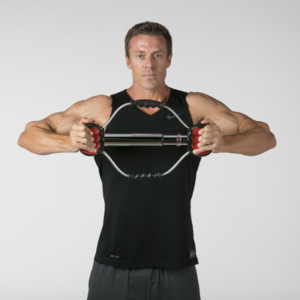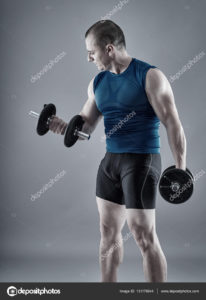First and foremost, the best home workout program is the one that you actually do on a consistent basis. It would not be a good idea to overload yourself with a perceived obligation to go through a process that you despise. It is important to choose movements with which you are comfortable and familiar. Yet those that will present a challenge. Variety of exercise is crucial to maintaining interest and to challenging your body. We all differ in size, strength, aptitude and desire. What may be one’s best or ideal workout may differ significantly from that of another.
You may find many training devices that are available for home workouts: dumbbells, resistance tubes, treadmills, push – up bars, abdominal devices. There is also your body weight, with no further resistance. Then we have Bullworker exercise products, which are all – in – one tools that are spring-loaded to provide varying resistance. I have used Bullworker for a couple of years and find them excellent for home workouts. Bullworker products can be seen here.
Here are several ways to schedule home workouts for best results.
- Full body workout one day, rest the next day
- Full body workout one day, cardio the next day
- Upper body one day, legs and abdominals the next day
- Pushing exercises one day, pulling exercises the next day
This workout illustration will be one that works the entire body, with rest on the following day. It is important to understand that muscles do not grow during a workout. They grow during the subsequent period of rest. This is true for a very muscular bodybuilder as well as for someone who simply seeks muscle tone.
ABDOMINALS
Choose from many devices for home abdominal exercise: ab trainers with back support for crunches. Or ab wheels, for stretching out the core to a plank position. You will find many variations of each. The Bullworker Steel Bow presents a good source of upper abdominal resistance. In a seated position with the Steel Bow between your legs, push down on the top of the Steel Bow against resistance (as determined by the spring in use). Continue until you are fatigued. A great “crunch”.
There are generally 3 types of abdominal movements to consider:
- Moving your rib cage toward your pelvis for upper abdominals.
- Moving your pelvis toward your rib cage for lower abdominals.
- Twisting your trunk side to side for the external oblique muscles.
I have done crunches for many years and am currently only doing lower abdominal and external oblique movements. For the external obliques, or love handles, I recommend twisting your trunk back and forth for 100 reps. These are easy to do.
My favorite lower ab program takes only 6 minutes, ideally. It is highly effective, partially because only 10 seconds of rest are recommended between each of 6 sets, which are timed at 50 seconds each. Here it is:
6-Minute Lower Abs Circuit Workout for Stronger Core Muscles
The “best home workout program” would include at least one set for lower abdominals, upper abdominals and external obliques. The 6-minute program above and 100 seated twists would be great for those who are not working the upper abs.
UPPER BODY
The upper back (latissimus dorsi), chest (pectorals), shoulders (deltoids) and upper arms ( biceps and triceps) are the showy muscles. There are many other muscle groups in the upper body, best left for later detail work.
- Upper back may be worked by dumbbell rows or by pulling resistance tubes toward each side of your body as you face a door anchor. The Bullworker Bow Classic gives us these choices, which I use on those days when I work upper body: (1) the cable spread, (2) archer to right side, (3) archer to left side and (4) seated lat push down. These may be viewed by the link in the second paragraph above. See downloadable Bow Classic fitness manual. These manuals are available with the products purchased. Pick 3-4 back movements.
- Chest may be worked by dumbbells from a prone position on a small bench or ottoman, by resistance tubes by facing away from a door anchor and pulling the tubes with both hands from a distant position until they meet in front of your chest….and by the Bullworker Steel Bow chest compression. The chest compression may be the most effective chest exercise that I have ever tried. This is especially productive as you move up in resistance by using more challenging springs. You will be keeping your elbows high and straight, then pushing inward to activate your pectoral muscles. Check the Steel Bow downloaded manual per the link in the second paragraph. Pick at least 3 chest movements.

- Shoulders may be thoroughly worked at home in several ways. Holding dumbbells in each hand, press upward from your shoulders either at the same time or by alternating each arm. Or raise the dumbbells from a bent arm position, together or separately. With resistance tubes: step on the middle of the tubes and raise the handles by pressing or by raising bent arms. With Bullworker: using the Bow Classic, execute a cable spread above your head. Or pull up on the grip of one side while pulling down on the grip on the other side while standing. See illustration provided in link in paragraph 2 above. Do 3-4 exercises, being sure to give each shoulder equal work.
- Arms must be flushed with blood at the biceps and the triceps areas. There are also specific exercises for the forearms, but these may be considered later. Also, the forearms are engaged somewhat with any upper body movement. For the biceps, I prefer dumbbells for curls. My reason is that dumbbells allow for slow negatives, the highly productive lowering (or eccentric) part of the curl. I also recommend bracing your upper arm so that the curl can be done with the biceps in isolation. I do this by placing each upper arm in sequence over the back of a soft chair as I stand behind. This prevents any jerking or such movement that may make the exercise easier, but less effective. Triceps are worked by straightening your arms against resistance. Dumbbells may be used while standing or seated. Resistance tubes can be used in the “kickback” motion from a door anchor or by standing on the middle of the tubes and straightening your arms in an upward direction. The Bullworker Steel Bow presents the option of straightening your arms against resistance as you sit on any chair that is not soft. The base of the Steel Bow must be stable as you push down. I would recommend at least 2 sets for both biceps and triceps.

LEGS
.The upper thigh muscles or quadriceps must be worked, as must the calves or gastrocnemius muscles. Squatting with dumbbells in each hand will work the upper thighs, as will lunges with dumbbells. Lunges are done by placing one leg in front as you squat, then returning to the beginning position. This is repeated with the other leg placed forward. Calves may be worked by standing with dumbbells in each hand and then raising your heels as high as you can, holding that position briefly before lowering your heels…and then repeating 10-12 times. The Bullworker Bow Classic may be used in a seated position by placing one foot against one end of the cable while holding the other end, then pointing your toes against the resistance created….then doing the same with the other foot. Again, see the Bullworker link in the second paragraph of this article. Do 2-3 sets for both upper thighs and calves.
CARDIO
There is not much to describe here. I do a 30-minute program on my treadmill, raising the speed after each minute. The end result is light to medium perspiration and around 225 calories burned. Others may have a stationary bicycle. Still others may simply go outside for a brisk walk. There is still another option: you may use lighter resistance and go through all the resistance exercises above at a rapid pace, with little rest time. This may not be ideal for muscle growth, but would become an excellent aerobic program. You will be able to tell this by the heavy perspiration.
CONCLUDING THOUGHTS
The above workout is flexible but demanding. It is not for beginners, especially if heavier resistance is used. Be careful to use resistance that is challenging but not overwhelming. Advance slowly. Base your choices of methods and resistance levels by your present condition and your sensible goals. Remember that you will not work out at all the next day. It is also important to construct a program that will place emphasis upon weaker body parts, those that need developing the most. Use more resistance and do more sets for these areas. Work them first, when energy is greater. Go for symmetry. Who wants huge legs and a puny upper body? Or Superman’s upper body with pipe stem legs?
It is fun to construct a bodybuilding plan, even if your goals are modest. The great bodybuilder Frank Zane said “bodybuilding is like sculpture”. Stay with your chosen plan for a while, then change it. This will keep you motivated and will prevent “burnout”. If building a symmetrical and muscular body is not your thing, choose movements that will otherwise meet your strength needs. Or simply work out to achieve better cardiovascular and skeletal health. A myriad of exercise choices and reasons are available. Choose wisely and reasonably! And have fun!
Comments or questions – see “Comments” box or email to richard@myworkoutathome.com